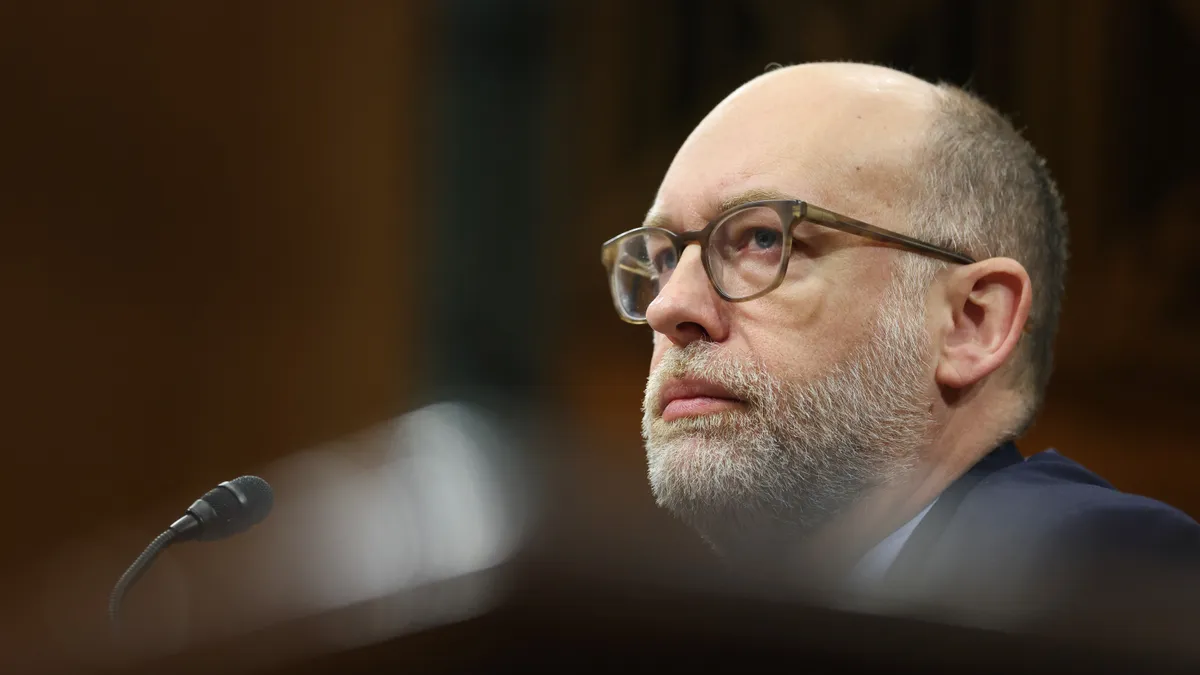Federal Deposit Insurance Corp. Chair Martin Gruenberg previewed an upcoming regulatory proposal that aims to overhaul how large regional banks operate in relation to capital requirements, bank supervision and deposit insurance pricing as a result of the string of bank failures this spring.
While speaking at an event at the Brookings Institution on Monday, Gruenberg noted the failure of the three large regional banks in March highlighted the need to exercise a systemic risk exception to protect uninsured depositors and the threat these banks can pose to the overall financial stability.
“It makes a compelling case for action by the federal bank regulatory agencies to address the underlying vulnerabilities that made the failure of these institutions possible,” Gruenberg said.
“The federal banking agencies have the statutory authorities to address these vulnerabilities. [T]he agencies’ actions include requiring long-term debt, capital recognition for unrealized losses for available for sale securities, and strengthened bank resolution plans, as well as enhancing supervisory attention to uninsured deposit concentrations and considering adjustments to risk-based pricing for deposit insurance. Once implemented, these measures will mitigate these risks and enhance the stability and resilience of the U.S. banking system,” he added.
Gruenberg said the regulators plan to improve the orderly resolution of banks over $100 billion in assets — a category that included failed Silicon Valley Bank.
The Insured Depository Institutions Plan Rule, first adopted in 2011, requires banks over $50 billion to periodically submit resolution plans to the FDIC. This rule requires covered banks to “develop and submit detailed plans demonstrating how [they] could be resolved in an orderly and timely manner in the event of receivership.”
The proposed rulemaking will incorporate useful lessons learned from past plans and resolutions, Gruenberg said. Since institutions under $100 billion can have resolution challenges, the FDIC wants certain information from banks over $50 billion to inform the resolution planning.
Though SVB and First Republic had been required to file resolution plans which provided basic information, more robust plans were needed to avoid the failures, he noted. But Signature Bank failed before it could file its first resolution in June, Gruenberg said.
“A stronger resolution planning requirement for large regional banks, combined with a long-term debt requirement, would provide a much stronger foundation for the orderly resolution of these institutions,” the FDIC chair said.
He also said that agencies plan to propose a long-term debt requirement for banks of $100 billion and more — sufficient enough to recapitalize the bank in resolution. While many regional banks have some outstanding long-term debt, the new proposal will likely require new debt issuance.
The long-term debt requirements bolster financial stability in many ways, including absorbing losses before the FDIC and the uninsured depositors take the losses and reducing the cost to the Deposit Insurance Fund, he said.
“The proposed rule would require a bank to provide a strategy that is not dependent on an over-the-weekend sale. It would require a bank to explain how it could be placed into a bridge, how operations could continue while separating itself from its parent and affiliates, and the actions that would be needed to stabilize a bridge.”
Gruenberg made a note of some of the things that would have helped to stop the bank failures, including promptly establishing a due diligence data room for interested parties to bid on the bank, maintaining necessary information for continuing the bank’s operation and describing strategies for reaching internal and external key stakeholders during resolution.
The federal banking agencies also issued a notice of proposed rulemaking to implement the Basel III capital rule in which unrealized losses on available for sale securities would flow through regulatory capital for all banks above $100 billion in assets. This also means that banks might need to retain or raise more capital to maintain their capital levels if these unrealized losses occur.
At the end of 2022, banks with more than $50 billion in assets were approximately 1% of banks but held nearly 80% of uninsured deposits, Gruenberg said. Also, less than 1% of all deposit accounts had balances above the deposit insurance limit of $250,000 but accounted for 40% of banking industry deposits, he added. At the time of its collapse, SVB’s 10 largest deposit accounts collectively held $13.3 billion in deposits, he noted.
“Had Silicon Valley Bank been required to hold capital against the unrealized losses on its available for sale securities, as the proposed Basel III framework would require, the bank might have averted the loss of market confidence and the liquidity run. That is because there would have been more capital held against these assets,” Gruenberg said.



















